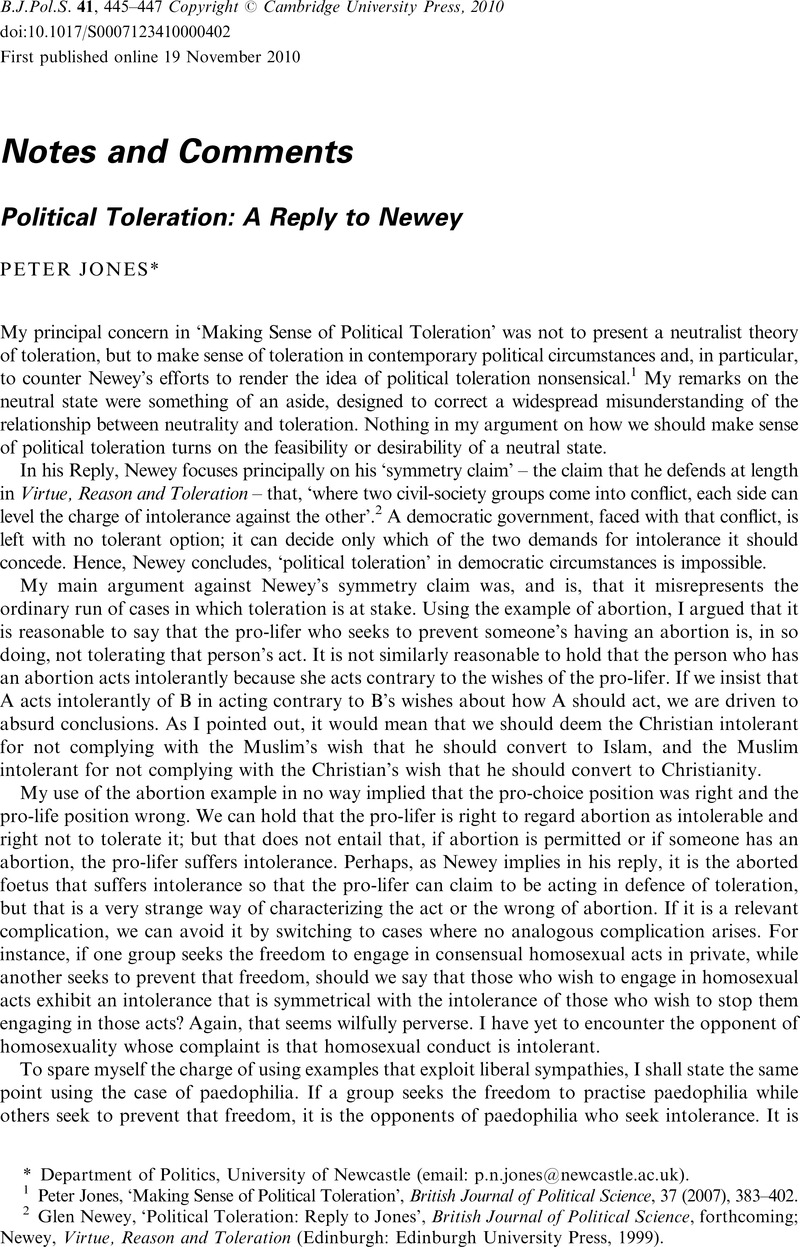Article contents
Political Toleration: A Reply to Newey
Published online by Cambridge University Press: 19 November 2010
Abstract

- Type
- Notes and Comments
- Information
- Copyright
- Copyright © Cambridge University Press 2010
References
1 Jones, Peter, ‘Making Sense of Political Toleration’, British Journal of Political Science, 37 (2007), 383–402CrossRefGoogle Scholar.
2 Newey, Glen, ‘Political Toleration: Reply to Jones’, British Journal of Political Science, forthcomingGoogle Scholar; Newey, , Virtue, Reason and Toleration (Edinburgh: Edinburgh University Press, 1999)Google Scholar.
3 I do not, for example, share Newey’s sense that ritual abuse hurled at one another by rival sets of football supporters is ‘the epitome of intolerance’.
4 ‘I have expounded a three-part structure for toleration, comprising classes of reasons of the following kinds: (a) reasons for disapproving of a practice; (b) reasons for failing to act so as to prevent the practice; (c) reasons explaining why, in other cases of disapproval, prevention is justified.’ Newey, , Virtue, Reason and Toleration, p. 48Google Scholar, my emphases; see also pp. 25–35.
5 For further discussion of this issue, see Jones, Peter, ‘Can Speech be Intolerant?’ in Glen Newey, ed., Freedom of Expression: Counting the Costs (Newcastle upon Tyne: Cambridge Scholars Publishing, 2007), pp. 9–29Google Scholar.
6 I previously noted this possibility in ‘Making Sense of Political Toleration’, p. 395, fn. 21.
- 9
- Cited by




